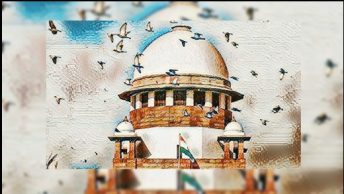In my response, I will highlight Rado’s key premises. I will also add additional perspectives, anecdotes, and a few references of my own. In doing so, I attempt to contextualise Rado’s arguments with a view to convey my appreciation of his article to the reader.
Let me set out facts that will underscore the importance of the Indian diaspora – both internationally as well as within India. According to the latest United Nations (UN) estimate, India has the largest number of migrants living abroad; estimated at 17.5 million people. Globally, Indians living abroad sent the highest amount of remittances back home: USD 78.6 billion. This was followed by the Chinese remittances by a substantial margin (USD 67.4 billion). The inflowing remittances in India were about 2.8% of Indian GDP. Therefore, Indian government’s policy on its diaspora is an important part of her development. Rado’s article makes a relevant contribution to this space by analysing the Report of the High Level Committee on Indian diaspora (“HLC”).
In their report published in 2001, the HLC wrote elaborately on several overarching aspects that they considered relevant for India’s policy on its diaspora. These aspects included ‘culture’, ‘citizenship’, ‘philanthropy’, ‘media’, ‘education’, and ‘finance’. Rado critiques the report and contextualises it by placing it within the broader scheme of India’s development agenda. In his critique, Rado problematises several assumptions made by the committee. He relies on the following key elements:
- Many definitions or assertions in the report are not representations of objective truth but of constructed knowledge. Most of these assertions are also oversimplified and arguably shortsighted. For example, in relation to the members of the diaspora, the report constructs an image of the heroic Indian who had to leave her underdeveloped motherland to seek opportunities elsewhere. It then assumes that all members of the diaspora subscribe to a common version of Indian nationality and have a sense of cultural belonging towards India. Similarly, the report makes general assertions about how the diaspora benefited from the Indian culture and are therefore ‘indebted’ to their homeland, i.e. India.
By highlighting these aspects of the report, Rado directs us towards the significant narratives created by the committee about the Indian diaspora and development. - While recognising the role of its diaspora in India’s development, the HLC report recommends forging of a “symbiotic relationship” between the State and its diaspora. The committee then recommends the future course of action for India’s development. In Rado’s reading, this involves the use of narratives and stories to legitimise versions of development that are favoured by the State. Likewise, the stories that are constructed about the diaspora serve as the basis for governing them
. - The report does not address important issues related to migration and underdevelopment. It oversimplifies the notion of development. HLC’s construction of ‘development’ and ‘diaspora’ draws our attention away from the issues which are otherwise quite significant.
Rado argues that these constructed narratives could serve as the basis on which Indian policies and laws are framed. As he correctly highlights, even when not formally acknowledged by such laws or policies, these narratives usually legitimise them. Indirectly, Rado acknowledges the fragility of narratives that overlook difficult questions in order to favour the state’s own vision of development.
In my view, these narratives also promote informal institutions that become entrenched in the polity. In some ways, continued existence of these institutions leads to path dependence in the development trajectory of any state. As an example, the continued rhetoric of ‘nationalism’ in the country has recently prompted a more restrictive approach towards India’s import policies from China. These policies may not be economically justifiable. But their future reform will depend also on an underlying preference for nationalistic tendencies.
With this context in mind, I think Rado’s analysis is a significant contribution to the growing body of literature focused on development in India. Additionally, Rado’s work is of value for any scholar studying ‘soft’ foundations of law, policy, and/or formal institutions in India. By ‘soft’ foundations, I refer to those foundations of an institution (or law/policy) that are not formally acknowledged as such. As Rado points out, these may include constructed stories and narratives about the Indian diaspora and development.
My own understanding of the narratives around the HLC’s report furthers Rado’s analysis. As I understand, the HLC report also caters to a phenomenon that has been well documented in the scholarship. Interestingly, interpretations of the term ‘diaspora’ have historically been dependent on a linear narrative of a homeland. In the scholarship, the more complicated and diverse ideas of ‘diaspora’ are relatively recent. The idea of a homeland embedded in the etymology of ‘diaspora’ is reflected in the HLC’s report. This idea is revealed as the committee constructs its own linear narrative of the homeland for Indians.
In this way, I think the HLC report caters to Indian emigrants categorised as diaspora within the HLC’s framing. The relationship of the diaspora with their homeland is articulated accurately by Prof. Vijay Mishra in his lecture from 2005 which was delivered at the Victoria University (Wellington). He points to an existing need within the diaspora for a real (territorial) and imagined (constructed) idea of homeland that evokes a sense of belonging within them. According to him, most often, these constructed ideas of homeland adopted by the diaspora may not represent the objective truth. The narratives espoused by the HLC resonate with this background. Of course, this may not apply to all members of the Indian diaspora. But the existence of this phenomenon is acknowledged within the scholarship. Rado’s emphasis on the stories created by the report complements and adds to this analysis; even though he doesn’t refer to it explicitly. In my opinion, the support for the current government amongst Indian diaspora is a revealing example of this phenomenon. The stories written by the HLC plays a key role in soliciting such support.
Rado’s description reveals the streak of nationalism apparent across the HLC’s constructed narratives. I see this as commensurate with the nationalist agendas propagated by the state agencies even in other avenues of governance such as foreign investments, Uniform Civil Code (UCC), and national security (including debates on privacy). The rhetoric of nationalism echoed recently in relation to formal government initiatives such as “Make in India” and “Aatma Nirbhar Bharat”. It has served the previous election campaigns of the present government which was also in power during the release of the HLC’s report.
As Chetan Bhatt & Parita Mukta, in their paper ‘Hindutva in the West: Mapping the Antinomies of Diaspora Nationalism’assert, the narratives of nationalism in relation to the diaspora has effects within the home state’s own institutions. In fact, in Mishra’s analysis, the state constructs its own identity partly through its imagination of the diaspora. In its diaspora, India sees a lost community connected to it through a common culture and identity. This connection is independent of the transactional and impersonal laws of the modern society. In the HLC’s imagination, the diaspora thus represents a true Gemeinschaft in the Weberian sense of the term. It is no surprise then that the HLC’s report constructs a liner and sometimes imaginary narrative of India and its diaspora. Rado’s article adds to this thought by supplying an important anecdote of the HLC’s report.
However, despite all its shortcomings emphasised by Rado, I think the report is not devoid of utility. In my understanding, by invoking an element of ‘indebtedness’, it solicits the financial resources of the diaspora. In describing the heroic non-resident Indian as the saviour of her motherland, the report casts a sense of obligation on the diaspora to contribute towards India’s development. The economic contribution of any diaspora is crucial to the home country’s development (howsoever perceived). Seeking the financial potential of the diaspora is an important faucet of any government’s political agenda. The Global Migration Group’s Handbook refers to this as one of the ways of ‘mainstreaming’ the diaspora into the development discourse. In order to seek these financial resources, the government ought to establish its dominion over members of the diaspora who are not otherwise amenable to the state’s sovereignty. Through its narratives, the HLC report seeks to achieve this.
The HLC report represents one amongst the many vignettes that reveal the use of rhetoric, narratives and stories offered by the state for specific purposes. Often in our study of law and policies, the value of these narratives is overlooked. Rado’s article draws our attention to it. He illuminates the process of lawmaking that commences much before the introduction of a bill in the parliament.





